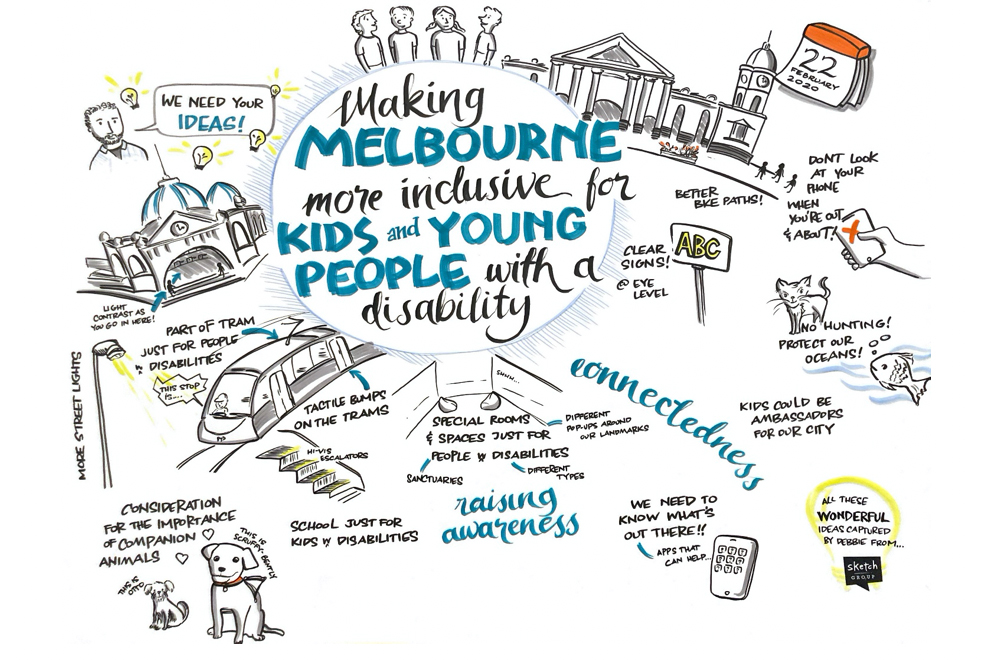Communication, pedestrian infrastructure and public transport were the three key issues from a study into how Melbourne could be made more inclusive for children and young people with disability.
It follows a workshop with children and young people with disability and their parents and guardians held in early 2020. With the help of a facilitator, the workshop discussed ways in which Melbourne could be made more inclusive. It resulted in 84 ideas that could work towards achieving this goal.
The research team from the University of Melbourne took an analysis of the brainstormed ideas and identified the following:
- The children and young people data resulted identified seven themes that related to: accessible public spaces, assistance, communication, pedestrian infrastructure, public good, public transport and safety
- The parents and guardians’ data resulted in six themes that included: amenities, awareness, communication, pedestrian infrastructure, public spaces and public transport.
The qualitative study sought the ideas of advocates, disability experts, children and adolescents with disability, parents and guardians on key enablers of inclusion for children and adolescents with a disability.
The need for adequate, disability-appropriate communication was expressed throughout the study. As well as providing clear and accurate information on public transport it recommended the provision of 3D models that can be touched, the use of technology, awareness and training for relevant staff and the community.
The provision of pedestrian infrastructure that can facilitate movement throughout the city was prominent in discussions and related mainly to: safety at crossings, the use of technology, signage at eye-level for children that communicates information via multiple methods, and safety such as on ramps and escalators.
Ideas around public transport included: detailed and clear announcements within carriages such as the use of tactile cues; buttons that beep and vibrate; awareness of accessible seating; and also on platforms with clear display information. Some ideas, such as crowding and the provision of uniformed assistance staff, were relevant within carriages and on platforms.
One of the study strengths was the inclusion of children and young people with a range of different disability types that allowed researchers to explore the diverse types of accessibility barriers in depth.
However, recruiting participants was the biggest challenge due to past and looming public events that included bushfires, floods and the beginning of COVID-19. Given these circumstances, the authors said it was difficult to make any recommendations to improve recruitment of children and young people with a disability, their parents and guardians into qualitative research.
The study was collaboration between the University of Melbourne and the City of Melbourne supported by the National Health and Medical Research Council Centre for Research Excellence in Disability and Health.
Findings from the study will inform the development of the City of Melbourne’s Disability Action Plan and other relevant strategies.
View the full report here: Word or PDF
For information in an accessible format such as large print or audio email: md-i@unimelb.edu.au.
Subscribe to the F2L newsletter
Join over 7,500 subscribers for the latest news, products, services and technologies for the disability and rehabilitation sectors. Subscribe here.

